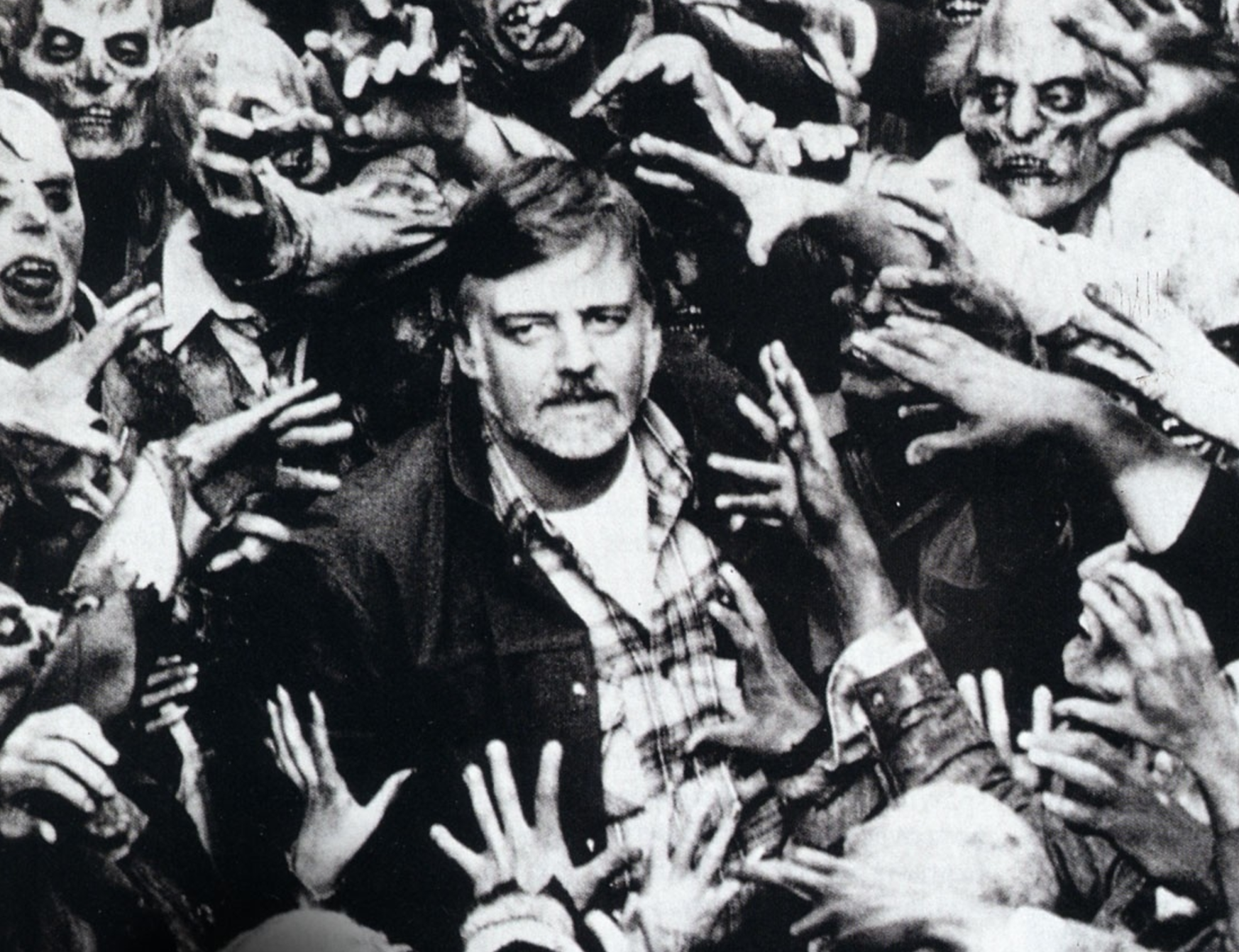Five moments that defined George A. Romero’s career

Five moments that defined George A. Romero’s career
“My zombies will never take over the world because I need the humans. The humans are the ones I dislike the most, and they’re where the trouble really lies.”
Late last night news filtered in that pioneering horror director George A. Romero passed away aged 77 after a “brief but aggressive battle with lung cancer”.
Without Romero, the landscape of horror would be drastically different. His work was trailblazing and ambitious.
It can be argued that ‘White Zombie’ in 1932, ‘I Walked With a Zombie’ in 1943 or ‘The Plague of the Zombies’ in 1966 laid the foundations for Romero’s ‘Night of the Living Dead’, but his 1968 classic brought the idea of the undead into a whole new dimension.
The importance of his ‘Dead Series’ in horror film culture shouldn’t be understated. Here are five of the most important moments of Romero’s illustrious career.
Racism
In a time of civil unrest in the United States, choosing a person of colour as the lead character for ‘Night of the Living Dead’ was a bold move, but it’s one that defines Romero as a filmmaker.
Here’s a quote from Romero from The Wrap about selecting the right actor to play Ben: “Duane Jones was the best actor we met to play Ben. If there was a film with a black actor in it, it usually had a racial theme, like ‘The Defiant Ones.’ Consciously I resisted writing new dialogue ‘cause he happens to be black. We just shot the script. Perhaps ‘Night of the Living Dead’ is the first film to have a black man playing the lead role regardless of, rather than because of, his race.”
However, the concept of race is punctuated at the end of the film when Ben meets his demise, though not at the hands of flesh-craving zombies like you might think…
Consumerism
Ten years after Romero shocked and impressed audiences with ‘Night of the Living Dead’, he moved his unique brand of terror from the farmhouse to the suburbs.
In ‘Dawn of the Dead’ survivors of the zombie apocalypse barricaded themselves in The Monroeville Mall in Pittsburgh. The shopping mall gave Romero scope, to give his victims access to food and weaponry, but also put a microscope on the increased commercialisation of America.
The zombies mindlessly ambling to the mall… Get it?
Humanising the zombie
In 1985’s ‘Day of the Dead’ Romero depicts a post-outbreak world where a selection of final survivors are holed up in bunker.
While staying alive is their main concern, one member of the community, Doctor Logan, is obsessed with finding out more about the living dead.
Enter, Bud.
Bud has become one of the most beloved flesh-eaters in the history of on-screen zombies. Romero’s depiction of a zombie coming to terms once again with human activities and objects has been used again and again ever since.
More modern examples of this ‘still human on the inside’ can be seen in ’28 Days Later’, lightheartedly in ‘Shaun of the Dead’, and most recently in ‘The Girl With All the Gifts’.
Music
While there are many beautifully scored moments throughout Romero’s filmography, it’s ‘Dawn Of The Dead’ that once again finds itself on top of the pile.
Recruiting another cult director in Dario Argento and Italian band Goblin, who also soundtracked Argento’s classic film Suspiria, to take the soundtrack reigns was an inspired move that yielded unforgettable results.
Blood n’ Guts
Moving from the traditional Haitian idea of the ‘slave’ zombie to the bloodthirsty one we know today, meant changing their aesthetic.
A vacant stare would no longer do, and Romero linked up with various make up artists and special effects technicians to hone the gore.
It was when he brought in Tom Savini and began their long-standing working relationship that the real Romero Zombie was born.
Since then it’s been replicated countless times.
Savini won a Saturn Award for best Make-Up Effects in 1985 for Day of the Dead. You can see why below.